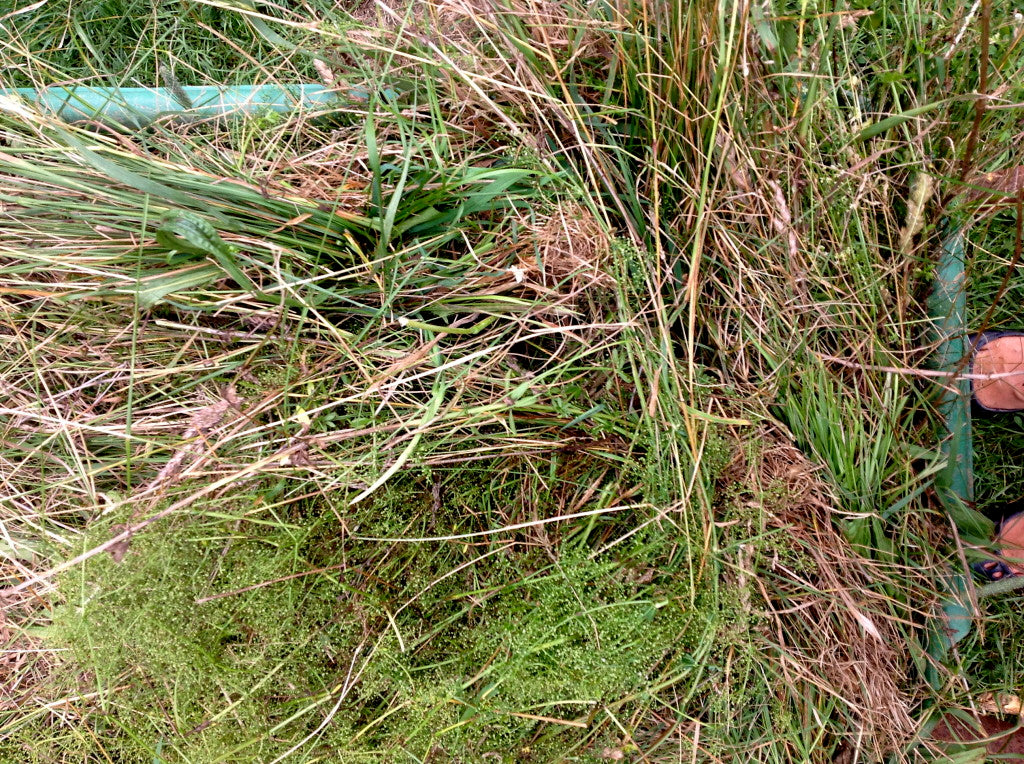
Efficient Weed Control
 June brings fast and furious growth to all garden plants--including weeds. If there is one month of the season to make weed control a priority, it's June. Many crops--especially those that have been direct sown--are still too small to be able to compete effectively with neighboring weeds; without timely weeding, they will be drowned out. In late July and August, your garden will suffer little if you become a less astute weeder or give up on weeding altogether--it won't look nice, but it will still produce a bounty. Slack now, though, and you risk serious decreases in yield.
June brings fast and furious growth to all garden plants--including weeds. If there is one month of the season to make weed control a priority, it's June. Many crops--especially those that have been direct sown--are still too small to be able to compete effectively with neighboring weeds; without timely weeding, they will be drowned out. In late July and August, your garden will suffer little if you become a less astute weeder or give up on weeding altogether--it won't look nice, but it will still produce a bounty. Slack now, though, and you risk serious decreases in yield.
Most people abhor weeding because they approach the task in a nilly-willy sort of way. The most common mistake is to wait until the weeds are large enough to be aggravating before trying to remove them. Far better is to employ one of the following two strategies--or a combination of them both.
1.) Frequent shallow cultivation. Cultivation is the act of breaking the surface of the soil with a metal implement (in gardens this is nearly always a hoe) in order to disrupt and stop the growth of young weeds. It is a preventive technique: if you cultivate frequently enough (say once a week or so), your garden will remain weed-free throughout the season. A 50x50 foot garden can be cultivated in about an hour or two, depending on how big weeds have become since the last cultivation. The easiest technique I've found is to use a "draw hoe"--one that you pull toward you like a broom--to slice just below the soil's surface. Keep your blade sharp (using a file or diamond hoe ever ten or fifteen minutes), and the work is precise and quick. Move along your beds, scuffling their entire surface, and the tiny weeds will be cut from their roots and die. Cultivation does several other things for your garden besides keeping weeds in check: the loose, cultivated soil dries and warms quickly in the spring, which is of benefit to heat-loving crops; the loose soil surface is permeable and "open" to receive rain water; and the process keeps you familiar with every nook and cranny of your garden to help you avoid unseen problems or forgotten corners. The downside to cultivating is that regularity is essential--once you miss a week or two, you'll probably have to do some hand weeding, which is far more time consuming.
2.) Mulching. When most gardeners have a weed problem, their first idea is to try mulch. Mulch absolutely does decrease the weed pressure in your garden. It also keeps the soil consistently moist and cool (of benefit to some crops--but a detriment to the heat lovers) and provides a clean appearance to the garden. The downside of mulch is that it needs to be applied very thickly in order to prevent weeds from emerging (especially grasses)--about six to twelve inches. The materials most often used for mulch are hay and straw, which are no longer cheap or abundant commodities in our region. Buying enough mulch hay to cover a 50x50 foot garden can easily cost several hundred dollars. Mulch also does not prevent weeds from emerging entirely, and because it prevents cultivation, these weeds must be removed by hand (luckily, they pull out easily thanks to the loose and friable soil preserved beneath the mulch).
Which route is best? It depends on your personality, your financial resources, and your summer plans. If you expect a long vacation at some point in the summer, mulching can allow you to leave your well-weeded-ahead-of-time garden for an extended period with few worries about watering or weeding. If one of your reasons for gardening is saving money, however, it's much less expensive to invest in a good hoe and cultivate. But by all means, expect and plan for weed control. Having to pull up weeds by hand when they are 12 inches tall will strand you in the garden for hours, cursing, or will lead you to abandon the weed-choked garden altogether.






